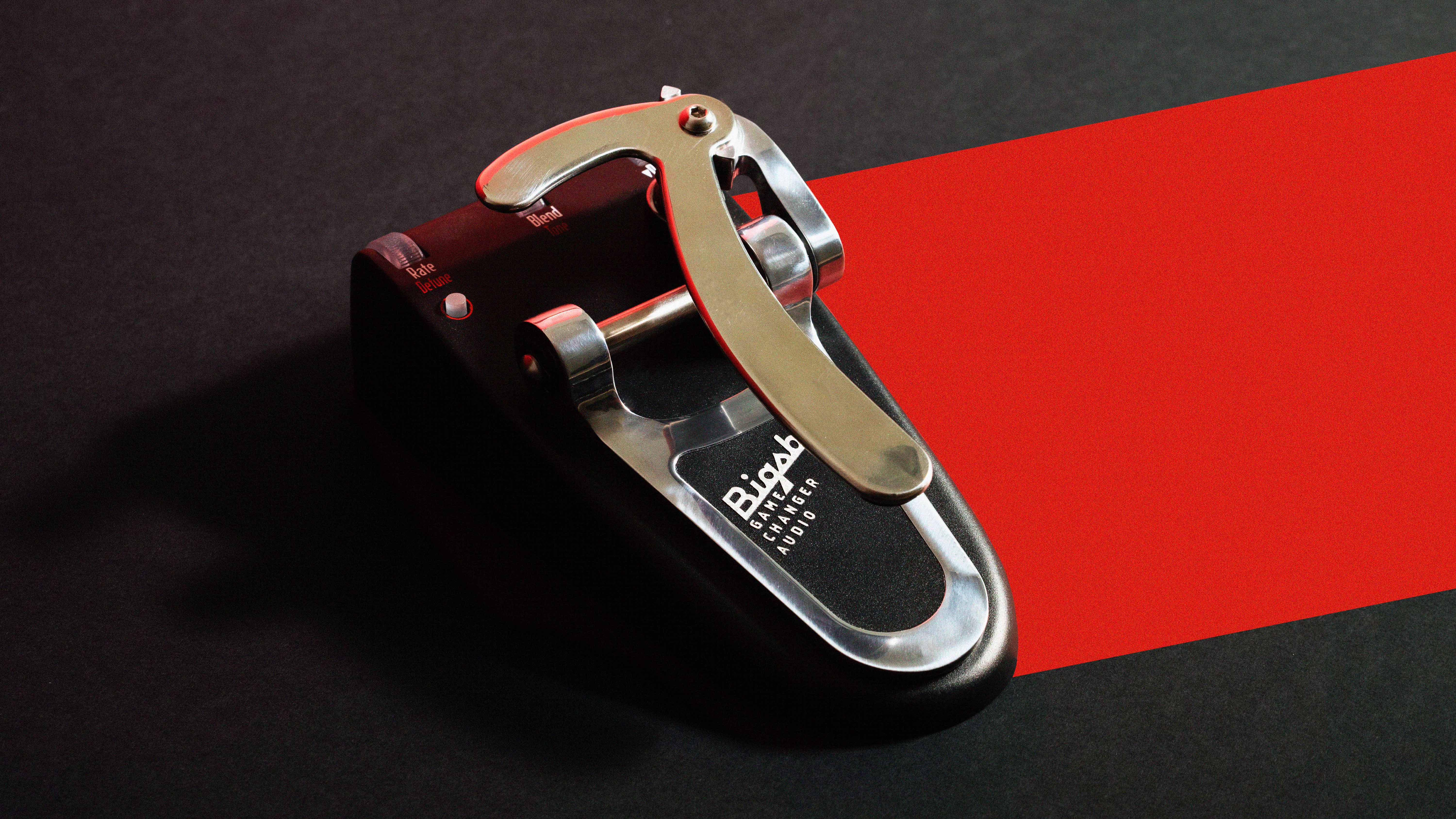MusicRadar Verdict
If you're only expecting a Bigsby you control with your foot you'll be surprised with how much more this pedal does, and even for traditional trem needs it's a learning curve – but it comes with the payoff of wider possibilities.
Pros
- +
More usage possibilities than its name implies
- +
The best Bigsby action available in pedal form
- +
Solid build quality
Cons
- -
We definitely found it trickier to use a Bigsby with your foot
MusicRadar's got your back
Gamechanger Bigsby Pedal: What is it?
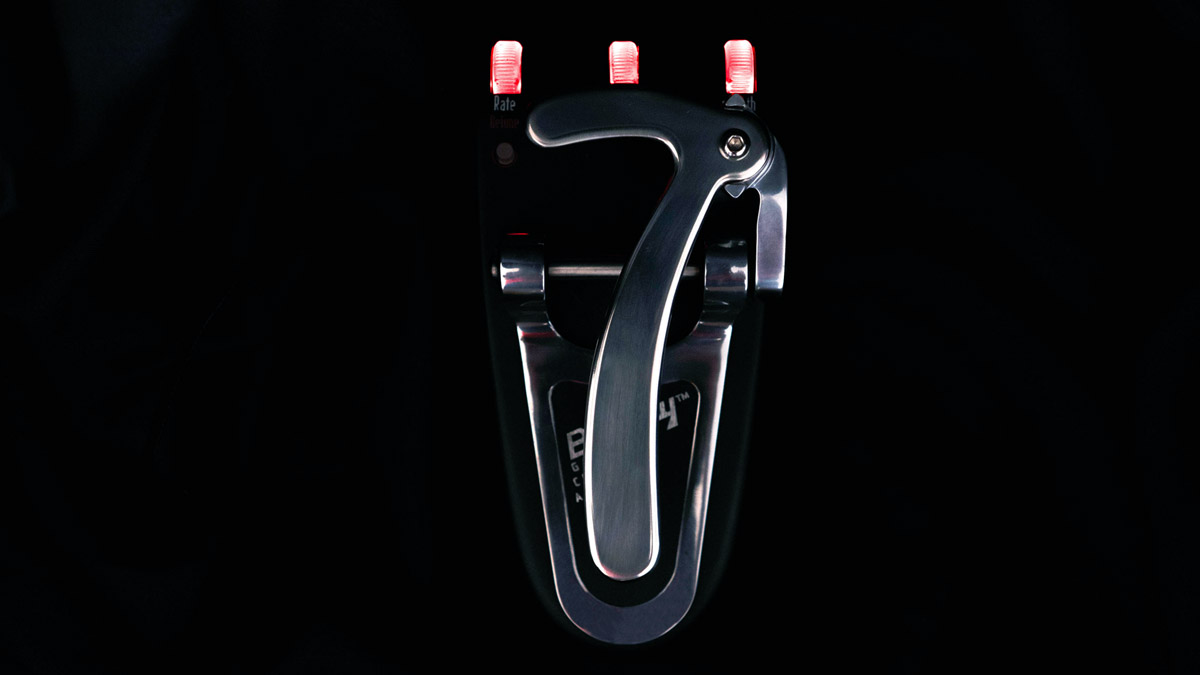
Bigsby's look cool, they sound great… so what's the problem? They require a significant commitment on the part of the player in fitting one retrospectively to their eclectic guitar (with a drill), they make restringing more of a chore, add weight to your instrument, and the biggest one for many; they can cause tuning issues.
Perhaps the last one isn't entirely fair; there are a lot of variable factors involved with tunings issues that a Bigsby will often be the scapegoat for. But they put your intonation under strain; literally by their very nature. If you've got a rock-solid Bigsby-fitted guitar then it's happy days – and good for you. But do the possible issues and drawbacks put others off?
Imagine being able to have a Bigsby whenever you want, and for whatever guitar you want without any of those possible drawbacks. That's what Latvia's Gamechanger Audio is proposing for players; a Bigsby Pedal. It even looks like a Bigsby! But it's on the floor.
Gamechanger has form for creating talking points with its effects but this is different; it's a reimagining of a traditional piece of hardware with the backing of the original company (albeit with Bigsby now owned by Fender). Is this a successful fusing of the vintage and modern approach?
It's actually a fair bit more than that, as we'll find out. Gamechanger's ambitions with the Bigsby Pedal go beyond simply trying to recreate the original (a tall order in itself) and a possible appeal beyond Bigsby fans and fence-sitters.
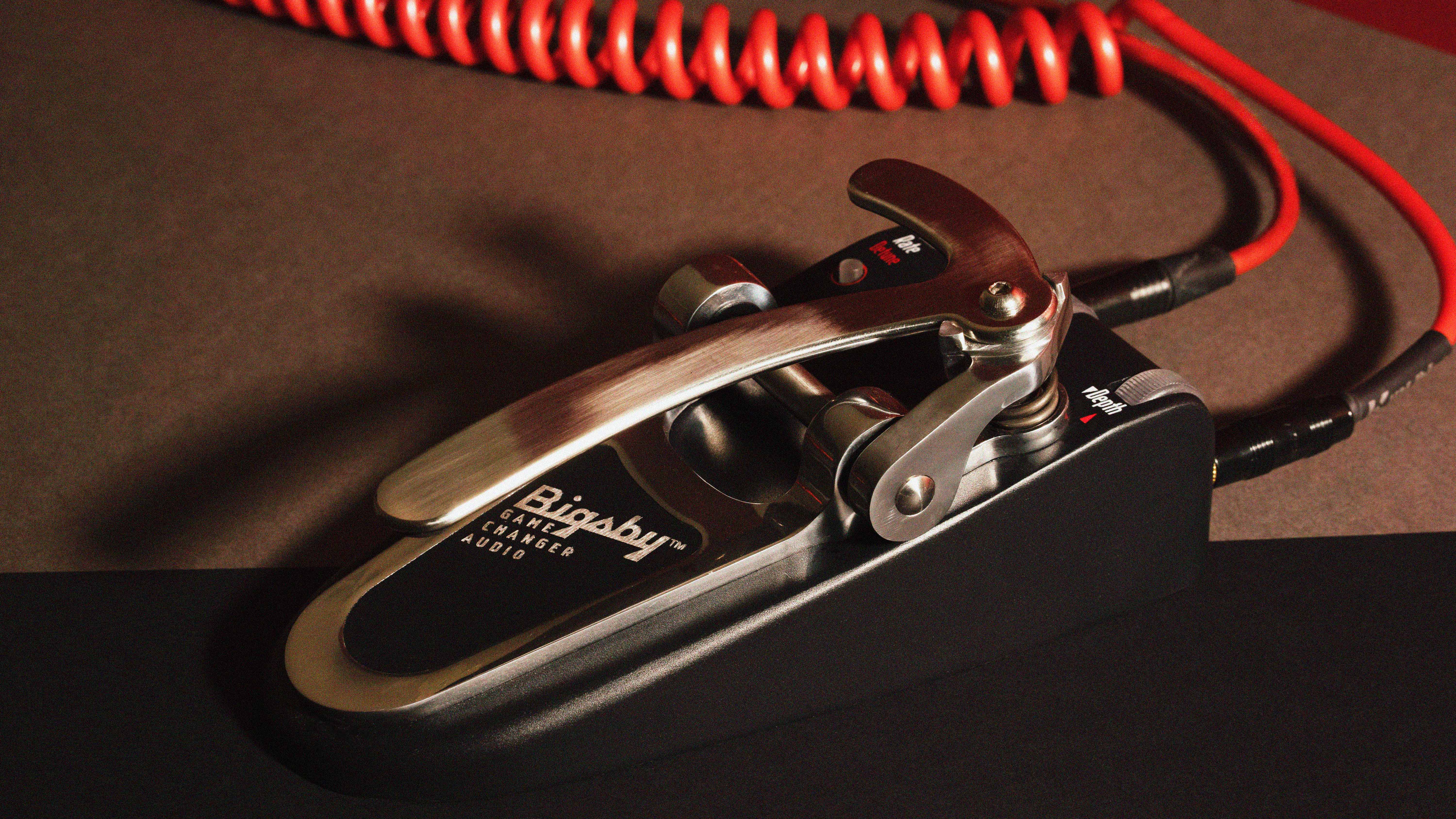
We can totally understand the doubters at this point; a digital recreation of the nuances of the Bigsby surely spells trouble. When you bend the pitch of chords with a Bigsby, the strings can detune and pitch-up individually in different ways because they're different thicknesses. It's uneven, and it's part of what makes the Bigsby its own thing. Emulating this with Gamechanger's SHARC processing power will be key… pardon the pun.
The second challenge for Gamechanger is surely the fact it's a pedal. There obviously a tactile experience between a players picking hand and a Bigsby; it allows for subtly and drama. How will that transfer to a foot on a treadle?
Want all the hottest music and gear news, reviews, deals, features and more, direct to your inbox? Sign up here.
Let's find out!
Gamechanger Bigsby Pedal: Performance and verdict
The look and build here are reassuring. It's got weight to it at 2lb with a combination of what feels like a robust matt black resin chassis with aluminium bottom plate and part of an authentic-looking aluminium Bigsby on the top.
The three control wheels at the top don't feature numbered guides to tell you where they're set but lights that flash more rapidly as you turn the control to a solid light max setting. It's the retro-futurist design Gamechanger has already proved successful at, and it works very well as an aesthetic approach here that reflects the user experience, as we'll discover.
The spring and tremolo arm (or should that now be leg?) feels strong and I feel it will prove resilient over time; the tension is like a Bigbsy and unlike any expression pedal you'll be used to.

The control wheels here pull double duty and take this pedal beyond just the replication of a Bigsby tremolo through physical design and digital algorithms. The control mode is switched on the top and has white and red modes with corresponding light colours.
Depth is the pitch control; offering half a step to a full octave down to widen the horizons. Blend is how much of the dry unaffected signal you want in the mix - crucial to reflecting and tracking more of the details in your playing. But it also begins to reveal Gamechanger's vision for this pedal; dial Blend back to a minimum (no light) and set the Depth on max and the rate down; it's an octave expression pedal. Bring that Depth control back so it drops the pitch to around a 5th down and the Bigbsy pedal can become a harmoniser of sorts.
The Rate control affects the speed at which the note fluctuates between the pitch you set it at and standard pitch; effectively a tremolo. Pushing this into extremes is when things can get a bit whacky, bordering on the sound of a cartoon spring. Some of you may find that useful – I'm not judging.
The secondary parameters are Depth again, but this time for setting how much you can pitch up with the pedal (you can also invert the pedal with a switch at the back so pushing down goes up in pitch). Now you're in a kind of Whammy territory – but you can't set it in a pitch as required like DigiTech's original. The spring always takes it back when you lift your foot off but it's great for the dynamic bursts that many will enjoy. And yes, you can dive bomb as well with this pedal.
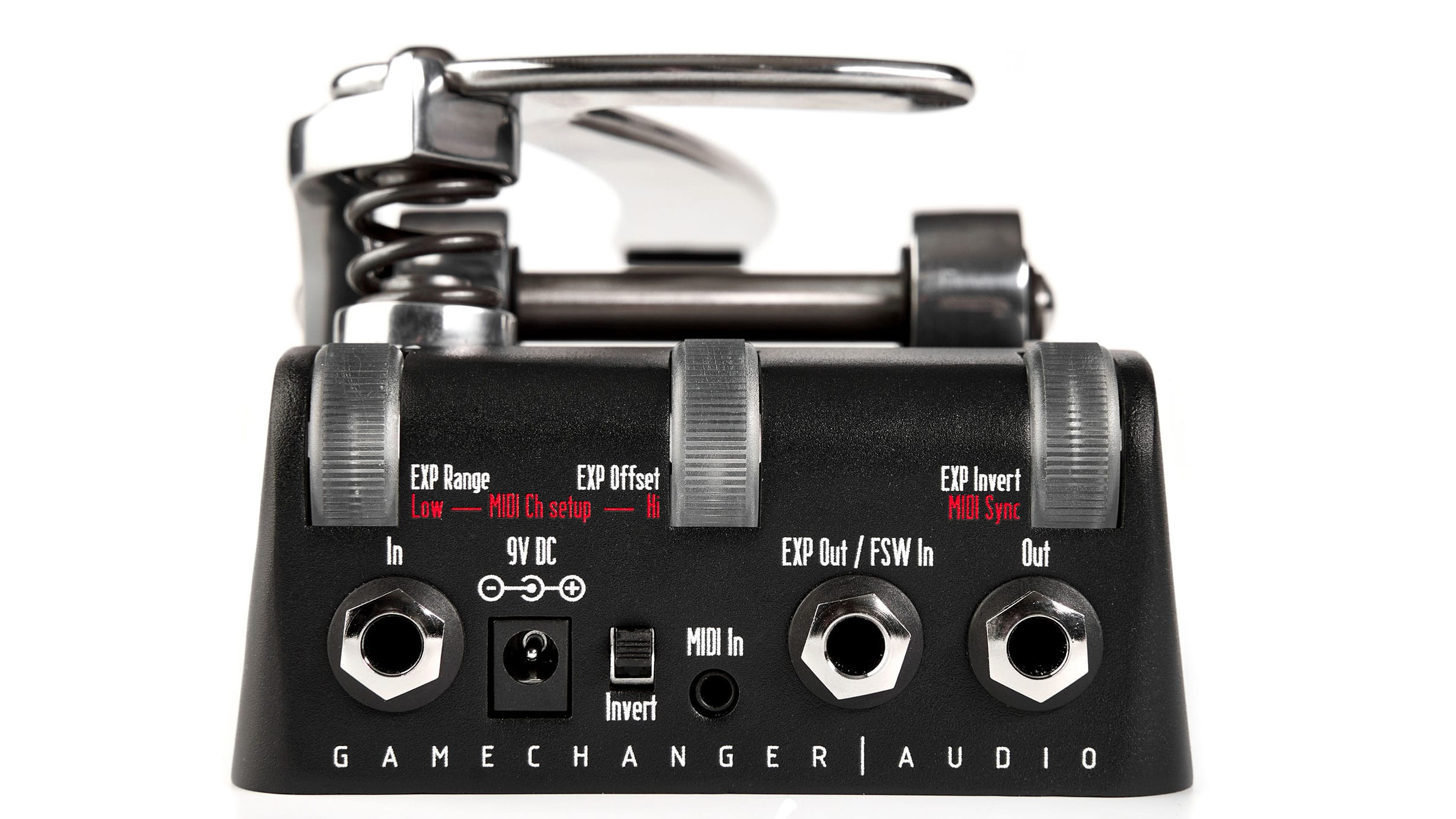
The Detune control is the most important parameter; it's all about acknowledging the unevenness of the Bigsby's effect on individual strings
The Tone control in the middle in the red zone is important for Bigsby fans. You can choose to dampen the high frequencies like a Bigsby bender would, or keep them; going beyond familiar Bigbsy territory.
The Detune control is the most important parameter in that regard; it's all about acknowledging the unevenness of the Bigsby's effect on individual strings. And once again there's flexibility; you can use Gamechanger's clever algorithm to emulate that… or not.

Give yourself time to explore the parameters and capabilities here – we can't stress that enough
These controls, combined with getting used to using this kind of effect on the floor with your foot, are a lot to take in at first. It's not like the traditional Bigsby in the sense that you have to take that as you find it. You can tailor this to your requirements, and you'll need time to discover how you'll want to do that for your needs. It surprised us how long we needed until this pedal became anything like the second nature of using a real Bigsby. It's not like using a wah – there's the constant required tension from that spring because yes, it's like a Bigsby, but it's a unique experience in this context with all these parameters. So give yourself time to explore the parameters and capabilities here – we can't stress that enough.
With that time will come the new sonic possibilities this pedal offers that truly make it an old-meets-new concept. The wider pitch bending possibilities than a Bigsby can take this more into Floyd Rose territory if you want, but in addition to the aforementioned octaver, tremolo and harmoniser roles, it can also get into Univibe sounds in the realm of a Fulltone Dejavibe because of its expression pedal construction.
If you want it to be like a Bigsby it does that; with the sensitivity of the real thing that will need time to adjust to with your foot. And as much as we still prefer using a traditional Bisby with our hand, we can't use it on any guitar – including our acoustic or even a seven-string – and we can't tailor it to respond in a way we'd never even considered before either. All while staying in tune when we lift our foot off!
MusicRadar verdict: If you're only expecting a Bigsby you control with your foot you'll be surprised with how much more this pedal does, and even for traditional trem needs it's a learning curve – but it comes with the payoff of wider possibilities.
Gamechanger Bigsby Pedal: Hands-on videos
Gamechanger Audio
Andertons
Chris Buck
In The Blues
Gamechanger Bigsby Pedal: Specifications
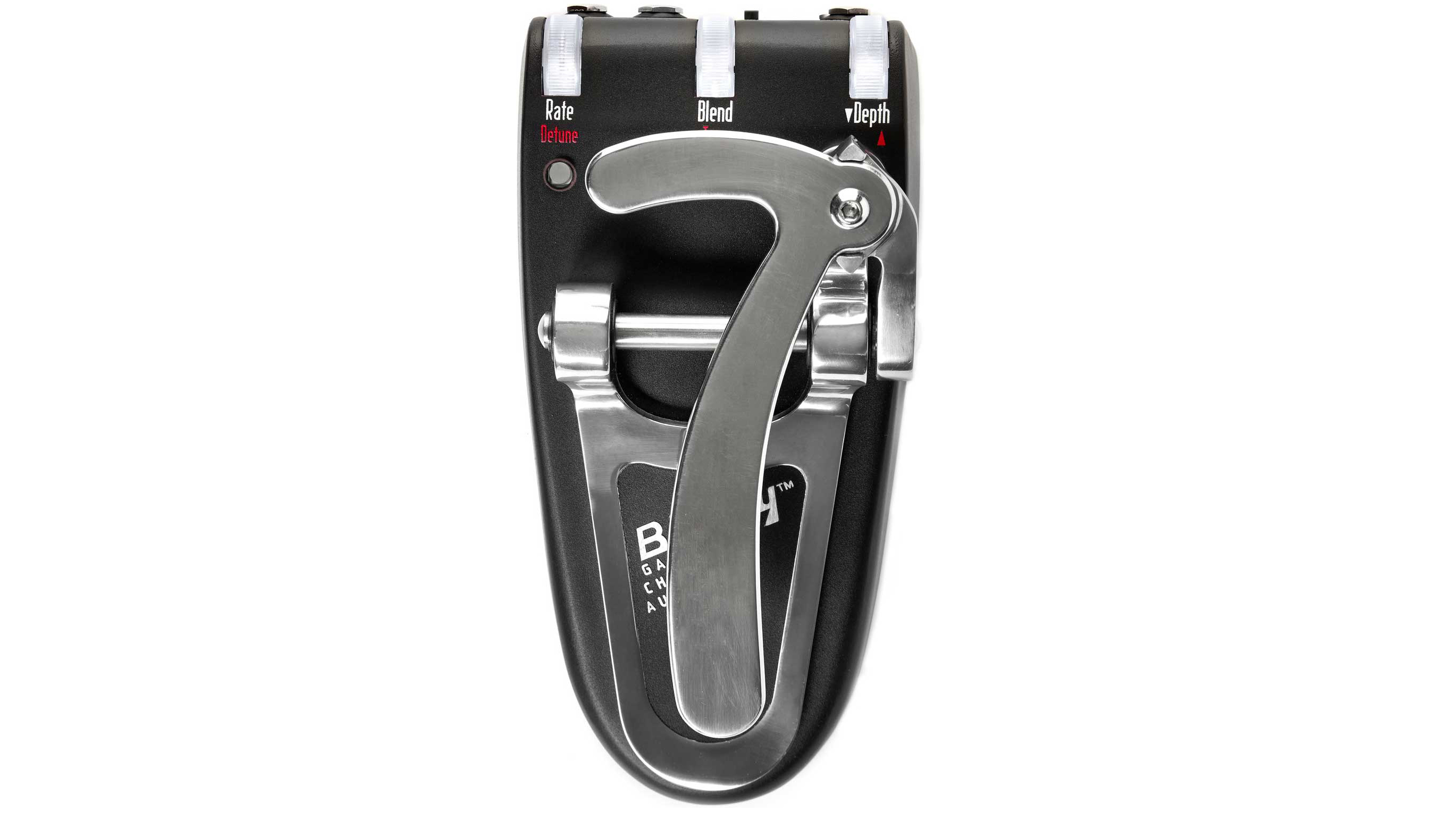
- Type: Polyphonic pitch-shifting expression pedal
- Controls: Rate/Detune, Blend/Tone, Depth; Invert switch
- Features: Expression pedal output / footswitch input, MIDI input
- Dimensions: 225 x 115 x 85mm [WxDxH]
- Power: 9V (250mA power draw)
- Contact: Gamechanger Audio

Rob is the Reviews Editor for GuitarWorld.com and MusicRadar guitars, so spends most of his waking hours (and beyond) thinking about and trying the latest gear while making sure our reviews team is giving you thorough and honest tests of it. He's worked for guitar mags and sites as a writer and editor for nearly 20 years but still winces at the thought of restringing anything with a Floyd Rose.
